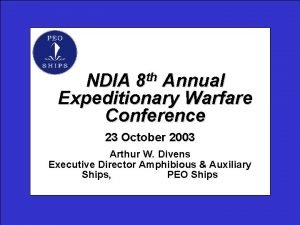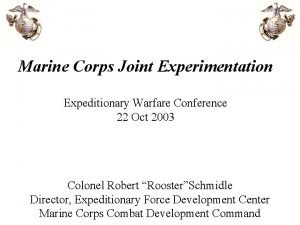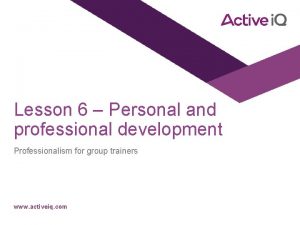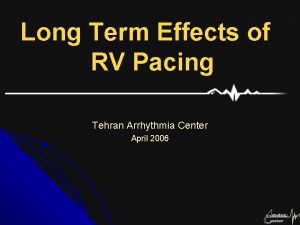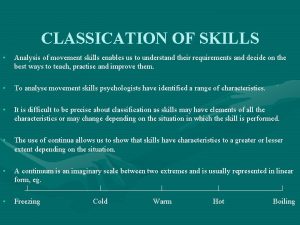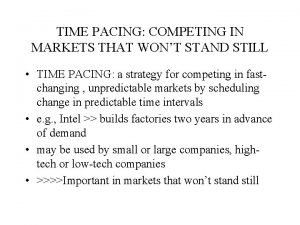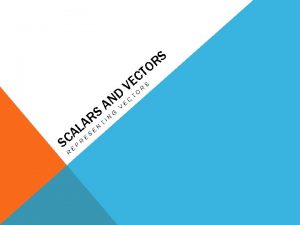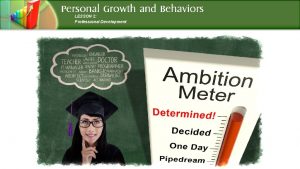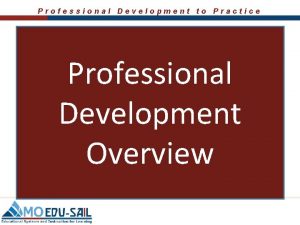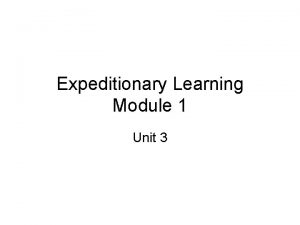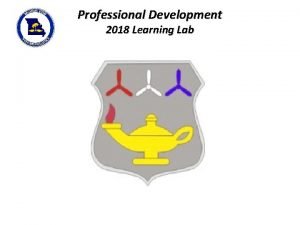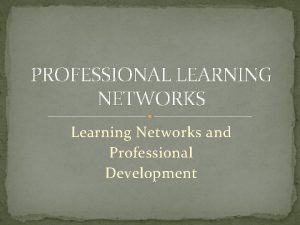Lesson Level Pacing Expeditionary Learning Professional Development Opening

















- Slides: 17

Lesson Level Pacing Expeditionary Learning Professional Development

Opening • Norms for Collaboration 2

Our Learning Targets • I can strategically adjust the pacing of Module lessons based on scaffolds, transitions and protocols. • I can revise lessons in a way that anticipates impact on pacing. • I can discuss ways to modify or revise protocols to alter pacing while maintaining the integrity of the standard. 3

Learning Target Tracker (p. 168) • Please locate the Learning Target Tracker in your Participant Notebook. • Take a moment to assess where you are in meeting these targets AT THE MOMENT. Mark where you are for each Learning Target with a symbol or the time. • We will revisit this tracker at the end of this session to see how your understanding of this information has grown.

Reading ELA Module 3 -8 Pacing Recommendations (pp. 169 -170) Read the ELA Module 3 -8 Pacing Recommendations • Text code with – (!) Pacing strategies I already use – ★� Pacing strategies I would like to try • 5

Share Your Thinking • Turn and talk – Share which strategies you would like to try with your students and share why with your partner. 6

Scaffolds and Transitions • Transitions: Moving from one section of the lesson to another can move seamlessly or be a time waster. Have materials ready in advance. Know what element is coming up in the lesson. • Consider any scaffolds needed for students in your class during preparation. What are the low prep materials needed? What resources are needed to construct or copy before the lesson begins? Is your entire team using the question stems? Who is responsible for making these resources? 7

Transitions Video • As you watch the video, capture strategies you could use related to transitions • After watching, think about how these strategies could look in your classroom and add ideas to your note-catcher (p. 187). 8

Guiding Questions for Pacing • What scaffolds do my students need? How will these scaffolds affect pacing? What can I do to ensure my lesson fits within the allotted time? • How can I prepare transitions of Module lessons to aid with pacing? • What protocols lend themselves to more efficient pacing, but keep the spirit of an activity present? • What is the main verb in the learning target and how is that reflected in the task? 9

Think Aloud– Transitions and Pacing • While listening to the think aloud, write down ideas you have related to pacing via transitions and scaffolds. 10

Transitions and Pacing • Discuss with your table group: How did the video and think aloud of the lesson show preparation of transitions to aid with pacing? What ideas do you have related to transitions that could impact pacing? • Whole group share out: Please share any Ah-Ha’s you have related to pacing and transitions 11

Discussion – Scaffolds and Pacing • Discuss with your table group: – How did the added scaffolds affect pacing? – What other scaffolds that could have been added that would impact pacing? • Whole group share out: Please share any Ah-Ha’s related to pacing and transitions 12

Modify Lessons through Lens of Transitions and Scaffolds • For the next 25 minutes, a module lesson based on transitions and scaffolds • Go back to the three lessons that are included in Session 5 and select one of the lessons to review and recommend transitions and scaffolds that will impact pacing. – G 4. M 4. U 1. L 8 (pp. 111 -123) – G 3. M 1. U 1. L 9 (pp. 124 -133) – G 3. M 1. U 2. L 5 (pp. 134 -143) 13

Give One, Get One, Move On • Share a modification you made to a lesson with a partner and explain how it affected pacing. • After you and your partner have both given an idea and gotten an idea, move on to new partners. • Repeat. 14

Closing: Learning Targets Reflection • I can strategically adjust the pacing of Module lessons based on scaffolds, transitions and protocols. • I can revise lessons in a way that anticipates impact on pacing. • I can discuss ways to modify or revise protocols to alter pacing while maintaining the integrity of the standard. 15

Revisiting the Learning Target Tracker (p. 168) • Take a moment to assess where you are now in meeting these targets. • Mark where you with a different symbol or the time. • How has your understanding of the learning targets grown?

I got, I need • On the index card, write down one thing you got from this training, and one thing you need following this session 17
 What is expeditionary learning curriculum
What is expeditionary learning curriculum Grade 8 module 1
Grade 8 module 1 Lesson structure and pacing
Lesson structure and pacing Ndia expeditionary warfare conference
Ndia expeditionary warfare conference Expeditionary warfare conference
Expeditionary warfare conference Personal and professional development level 6
Personal and professional development level 6 Transvenous pacing
Transvenous pacing Pacing quick check
Pacing quick check Aai pacing
Aai pacing Pacing steed meaning
Pacing steed meaning Transvenous pacing
Transvenous pacing Pacing
Pacing Classification of skills
Classification of skills Muscular involvement continuum
Muscular involvement continuum Hisd curriculum scope and sequence
Hisd curriculum scope and sequence Pacing and pausing
Pacing and pausing Time pacing
Time pacing Consider a football coach pacing back and forth
Consider a football coach pacing back and forth



